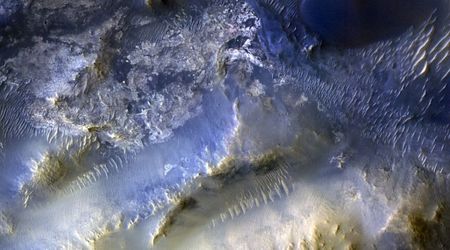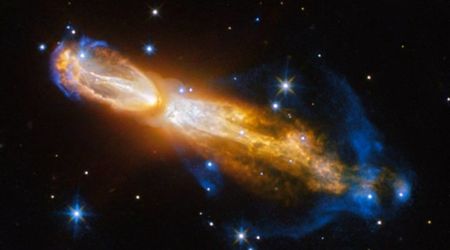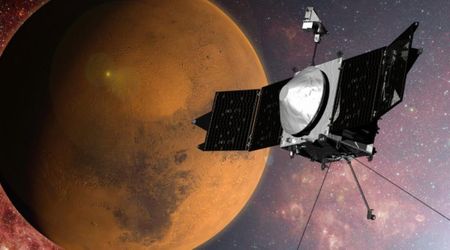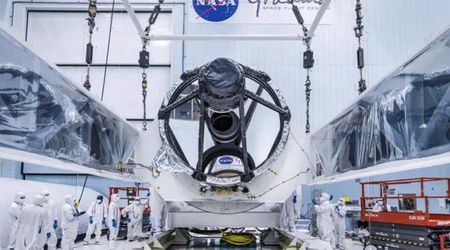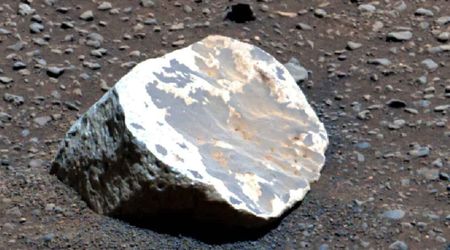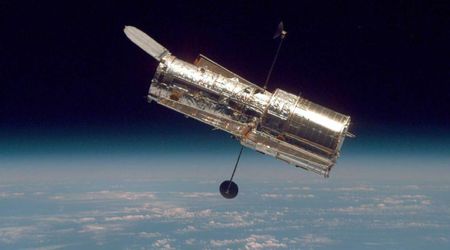Hubble and Webb Telescopes reveal stunning two faces of a star cluster duo in distant galaxy

A striking new image, combining data from NASA's Hubble and James Webb Space Telescopes, offers an unprecedented look at two-star clusters nestled within the Small Magellanic Cloud. The celestial duo designated NGC 460 and NGC 456 showcases the intricate interplay of gas, dust, and nascent stars in a dwarf galaxy orbiting our Milky Way, as per NASA.
Two telescopes for two star clusters! ✨
— Hubble (@NASAHubble) July 7, 2025
Hubble’s visible-light view captures glowing, ionized gas as stellar radiation blows “bubbles” in clouds of gas and dust (blue), while @NASAWebb's infrared vision highlights delicate structures of dust (red). pic.twitter.com/Sm7aWiuDqT
These open clusters, loose aggregations of young stars, are part of a larger complex of nebulae and clusters, indicating a shared evolutionary history. Stellar formation is a dynamic process: as gas clouds collapse under gravity, new stars ignite. The intense winds from these hot, young stars then sculpt the surrounding nebulae, a phenomenon vividly captured in the new imagery. This carving action can, in turn, trigger further star birth.
It’s always better when we’re together 💕
— NASA Webb Telescope (@NASAWebb) July 7, 2025
This new mosaic combines Webb’s observations with @NASAHubble’s, increasing our understanding of open star clusters NGC 460 and NGC 456. https://t.co/KKwnAixLZ8 pic.twitter.com/LO7c432D73
The combined observations provide a dual perspective on this stellar nursery. Hubble's visible data (depicted in blue) reveals the incandescent, ionized gas and the "bubbles" formed by stellar radiation pushing against the gas and dust. Conversely, Webb's infrared capabilities (highlighted in red) pierce through the dust, illuminating its delicate filamentary structures and dense clumps. Unlike Hubble's view, where dust often appears as opaque silhouettes, Webb's infrared gaze shows the dust glowing from the warmth of starlight. This intricate mix of gas and dust constitutes the interstellar medium.

The numerous nodules visible in the images are active sites of star formation, with stars ranging from a mere one to ten million years old, a stark contrast to our Sun's 4.5 billion-year existence. The region, known as the N38-84-85 complex, is notably home to several rare O-type stars. These exceptionally hot and massive stars, which fuse hydrogen much like our Sun, are exceedingly uncommon, with an estimated 20,000 such stars among the Milky Way's 400 billion.

The Small Magellanic Cloud is a critical target for astronomers due to its lower "metal" content (elements heavier than hydrogen and helium) compared to the Milky Way. This characteristic mirrors the conditions prevalent in the early universe, making the dwarf galaxy a natural laboratory for studying star formation and the interstellar medium in a primordial cosmic environment. Researchers plan to leverage these new observations of NGC 460 and NGC 456 to investigate gas flow dynamics, refine the collision history between the Small and Large Magellanic Clouds, explore starburst events triggered by galactic interactions, and deepen their understanding of the interstellar medium.

Beyond the Small Magellanic Cloud, the NASA/ESA Hubble Space Telescope persistently delivers crucial insights into the forces that shape galaxies across the universe. Recent observations, dated June 20, have illuminated both vigorous star formation and quieter galactic regions within our cosmic vicinity. Among these, the dwarf galaxy NGC 4449 in the constellation Canes Venatici, a mere 12.5 million light-years distant, stands out as a prime example of a "starburst galaxy."
Seeing stars with NGC 4449! 💫
— HUBBLE (@HUBBLE_space) June 20, 2025
Access more space-themed .gifs at our giphy page: https://t.co/9KQS4UMAAF pic.twitter.com/GRtIzl4VGH
Despite its modest size relative to the Milky Way, NGC 4449 is a hotbed of prolific star formation. What makes this dwarf galaxy particularly intriguing is that this intense stellar birth isn't concentrated solely in its core; instead, it's happening throughout the galaxy. Scientists theorize that this widespread activity is a direct result of gravitational interactions with neighboring galactic systems. Given its close proximity, NGC 4449 offers an exceptional natural laboratory for researchers to investigate how such gravitational encounters drive the creation of new stars.
